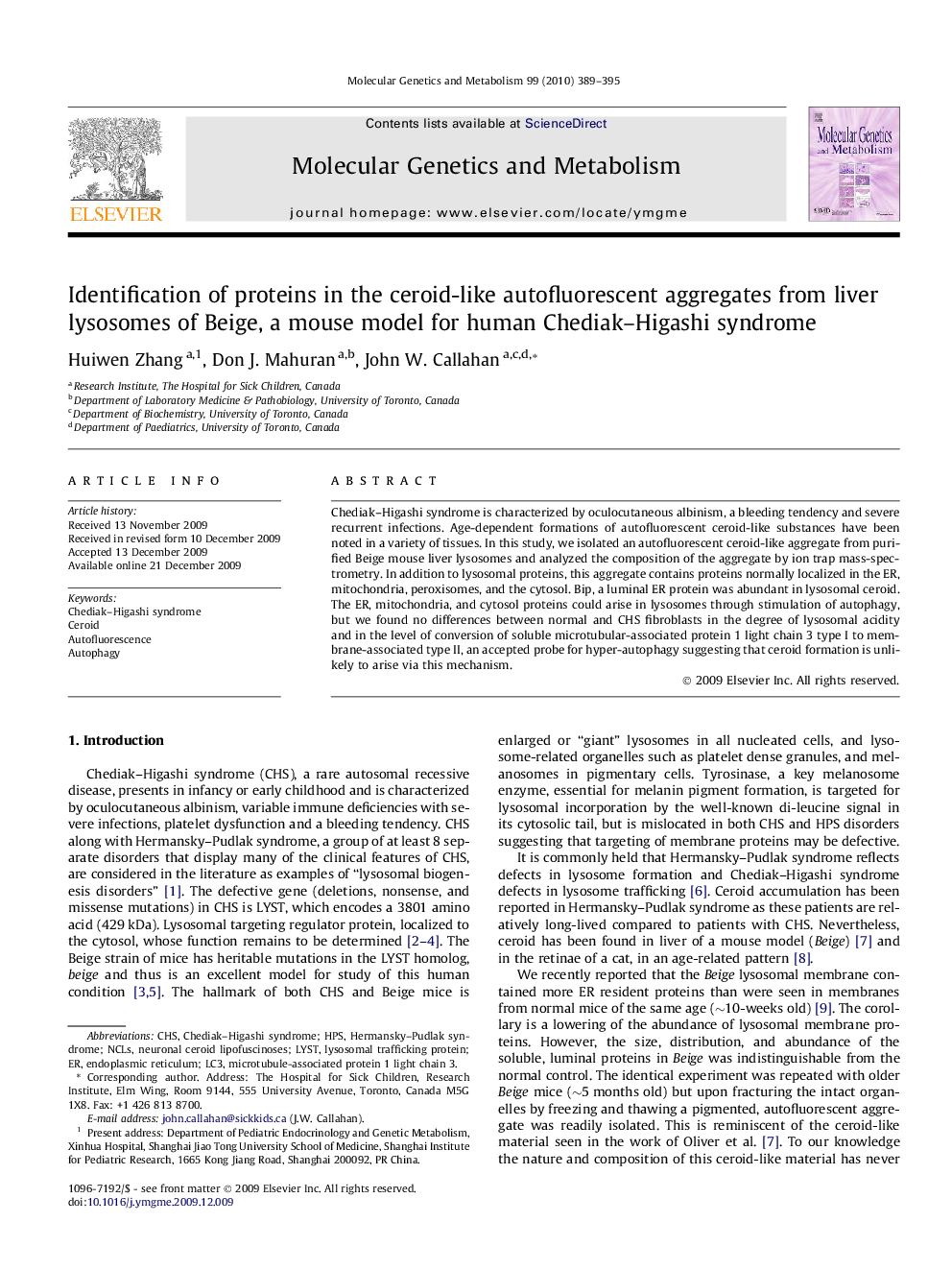| Article ID | Journal | Published Year | Pages | File Type |
|---|---|---|---|---|
| 1999003 | Molecular Genetics and Metabolism | 2010 | 7 Pages |
Chediak–Higashi syndrome is characterized by oculocutaneous albinism, a bleeding tendency and severe recurrent infections. Age-dependent formations of autofluorescent ceroid-like substances have been noted in a variety of tissues. In this study, we isolated an autofluorescent ceroid-like aggregate from purified Beige mouse liver lysosomes and analyzed the composition of the aggregate by ion trap mass-spectrometry. In addition to lysosomal proteins, this aggregate contains proteins normally localized in the ER, mitochondria, peroxisomes, and the cytosol. Bip, a luminal ER protein was abundant in lysosomal ceroid. The ER, mitochondria, and cytosol proteins could arise in lysosomes through stimulation of autophagy, but we found no differences between normal and CHS fibroblasts in the degree of lysosomal acidity and in the level of conversion of soluble microtubular-associated protein 1 light chain 3 type I to membrane-associated type II, an accepted probe for hyper-autophagy suggesting that ceroid formation is unlikely to arise via this mechanism.
